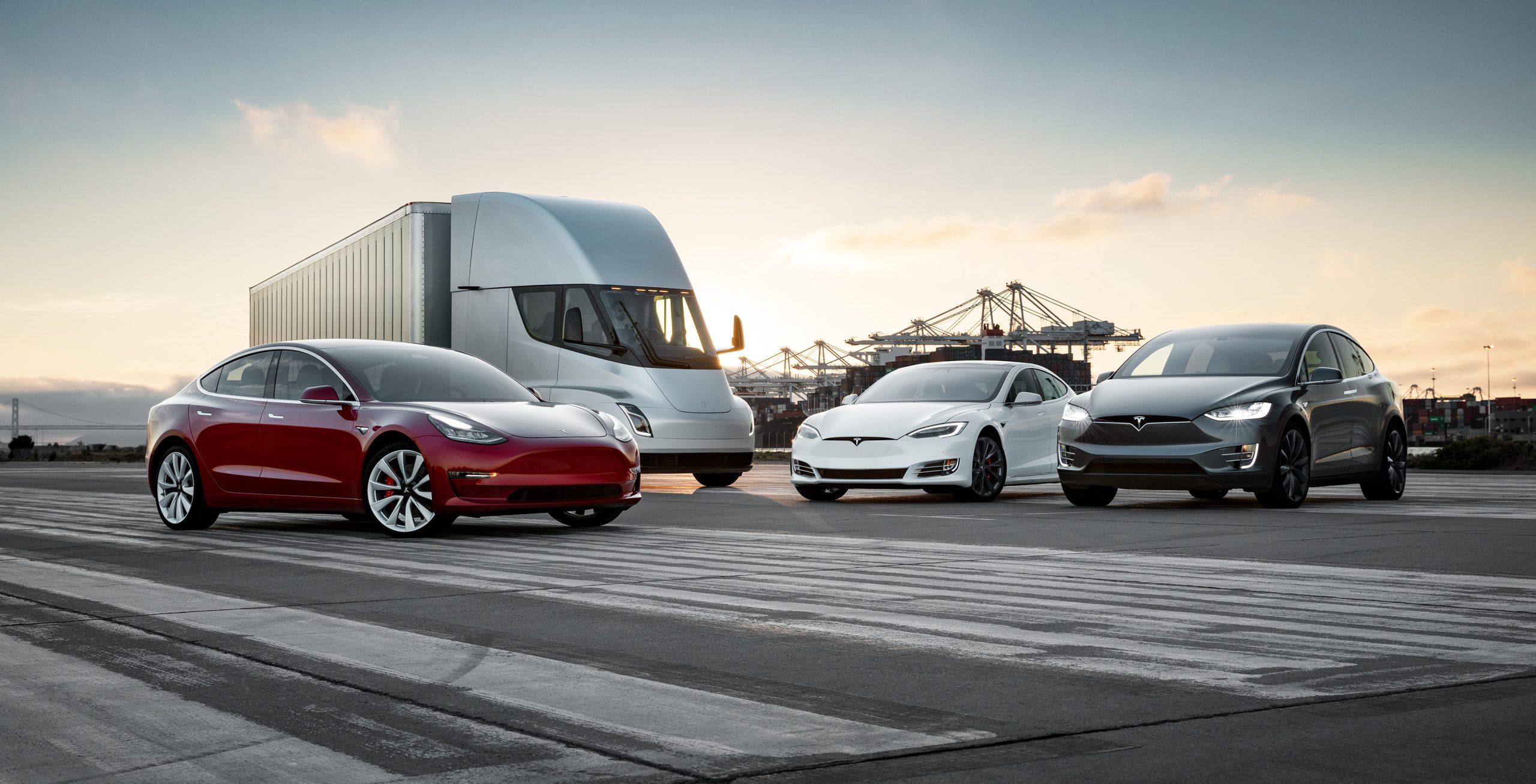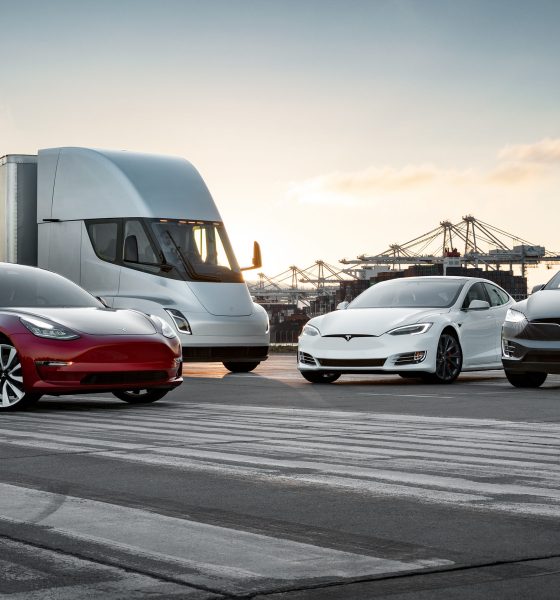The auto industry saw something historic happen this past week in Germany. In a rare act of unity, the leaders of the country’s big three Automakers; Volkswagen CEO Herbert Diess, Daimler CEO Dieter Zetsche, and BMW CEO Harald Krüger, all agreed that the future of German auto is the electric car. Over the next decade, each CEO would be pushing their respective companies to shift and embrace the idea of an electrified fleet.
No (more) compromises
The deal did not come easy. The Volkswagen CEO caused waves among German automakers and suppliers after he called for the widespread adoption of electric cars and a mass investment in EV charging infrastructure. The VW CEO’s proposal was bold: he wanted the German auto industry to focus solely on EVs, and he warned that he would be “evaporating billions” to do so. The proposal was met with a lot of criticism, from both fellow automakers and suppliers. In response, Volkswagen threatened to leave the industry lobby group Association of the Automotive Industry (VDA) because of its refusal to commit to an electric-first strategy.
BMW CEO Harald Krüger was particularly critical of Volkswagen’s proposal, which resulted in what industry insiders described as heated talks between the two executives. Krüger’s reservations are understandable, as Volkswagen’s demands do not favor BMW. One of Diess’ requests called for free charging benefits for electric car owners whose vehicles cost less than 20,000 euros. This benefits Volkswagen, which is aiming to produce an affordable electric car, but not companies like BMW and Daimler, who, on average, make more expensive vehicles.
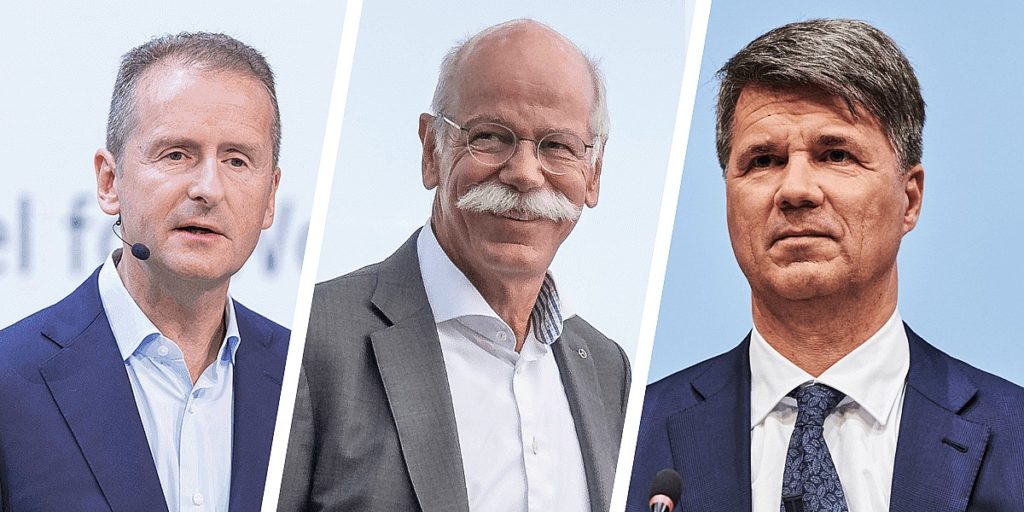
Despite these headwinds, a short but meaningful call last Wednesday sealed the deal for Das Auto’s electric car initiatives. Insiders from news publication Handelsblatt noted that after ten minutes, the Volkswagen, BMW, and Daimler CEOs were practically on the same page, and by the end of the 40-minute conference call, the three executives have found a middle ground. The representative of the VDA dubbed the meeting as “constructive,” and the lobby group has stated that it’s expecting the three manufacturers to work out a consensus paper in the near future.
Apart from advocating for electromobility, The companies also decided to forego commitments to other forms of alternative propulsion, such as hydrogen fuel cells. In a statement to media publication welt.de, BMW member of the board Klaus Fröhlich mentioned that a breakthrough in hydrogen fuel cell cars is unlikely within the next decade, particularly as charging infrastructure for electric vehicles is growing at a rate where long-distance travel will soon be a non-issue. “The probability of a hydrogen infrastructure developing in parallel is very low,” Fröhlich said.
A LinkedIn post written by the Volkswagen CEO outlined his points as follows. “In order to stop global warming, there is no way around the Paris climate targets. To do this, the car must become cleaner as soon as possible and CO2-free by 2050 at the latest. E-mobility is the only technology that is feasible from today’s perspective. I am convinced that if we concentrate all our energies on the leading technology of electromobility, we will achieve both: the car will become cleaner in the short term and CO2-free in the long term. And the car country Germany will be the world leader in driving the future,” Diess wrote.
All According to the (Master) Plan

While Germany’s commitment to electromobility is undoubtedly impressive, it should be noted that the developments and milestones of the electric motor and electric car batteries over the past years are the catalysts that initiated this change. Electric mobility advocate Auke Hoekstra notes that electric motors are pretty much the only superior alternative to the internal combustion engine today, in the way that they are smaller, lighter, cheaper, practically maintenance-free, and around four times more efficient. It should also be noted that it took the efforts of a daring Silicon Valley electric car company to show the industry that electric mobility is feasible.
Elon Musk has always noted that Tesla exists to accelerate the world’s transition to sustainable energy. Back in 2006, he posted his first Master Plan, which involved the creation of electric cars that are so compelling for car buyers; the behemoth that is traditional auto will start shifting its efforts to electric mobility. Tesla’s first car, the original Roadster, was mostly a proof-of-concept in this sense, as it is a vehicle that simply proved the idea that electric cars can be just as fast, sexy, and desirable as the next Porsche or Ferrari. The Model S and Model X took the company’s mission further, proving that electric cars are not only comparable to their fossil fuel-powered counterparts; they could be far better. Loaded to the teeth with tech, the sedan and crossover (hence the Model “S” and “X” moniker) were successful, but they still only catered to the higher end of the market.
Tesla shook the auto industry with the Model 3, a vehicle that practically took the company and its CEO inches away from ruin. Elon Musk described the Model 3 ramp as one of the most painful periods of his career, and objectively speaking, he was correct. Musk bet Tesla’s entire future in the Model 3, and if it wasn’t for his own willingness to sacrifice his own comfort (Musk returned to sleeping under a table in Tesla’s Fremont factory at the height of the Model 3’s “production hell”), clever, out-of-the-box solutions from remarkable executives like current President of Automotive Jerome Guillen (who came up with the idea of creating another Model 3 assembly line inside a sprung structure), and the insane efforts of Tesla’s workers across the board, the company would have fallen. Months later, the Model 3 would become the United States’ best-selling luxury vehicle of 2018, and within the first quarter of 2019, the electric sedan would begin to take over Europe and China. At this point, it is no exaggeration to state that the Model 3, with its track-capable motors and battery, is pretty much the gold standard of electric vehicles today.
A Mission Achieved

With the behemoth that is German Auto now awakened and committing itself fully towards electric mobility, will Tesla finally be trampled under the giants’ feet? Not necessarily. Tesla still functions like a Silicon Valley startup, moving fast, making mistakes, and fixing errors on the go. The result of this work culture, coupled with extensive experience with the electric motor and batteries, is a carmaker that moves incredibly fast. Thus, by the time the German automakers come up with vehicles that can challenge the Model 3 in its current iteration in terms of tech, features, and specs, Tesla would probably have improved its vehicles further. It’s incredible to see traditional automakers finally commit to electric cars, but in terms of beating Tesla, it would suffice to say that it would be very difficult to trample a company that stubbornly refuses to stay still.
When asked by 60 Minutes host Lesley Stahl if he would be open to other carmakers beating Tesla at its own game, Elon Musk candidly stated that as long as the world’s shift to electric transportation is secured, he would be able to sleep well at night. “If somebody comes and makes a better electric car than Tesla and it’s so much better than ours that we can’t sell our cars, and we go bankrupt, I still think that’s a good thing for the world,” Musk said, to the surprise of the veteran host. This is one of the things that is fascinating about Tesla and Elon Musk. Both the company and its CEO are fighting tooth and nail every day to meet its next ridiculously difficult target; but beyond these struggles, Musk and Tesla are fully aware that the fight is much bigger than them. A future that is not dependent on fossil fuels is a far bigger cause.
It took a while before Germany’s biggest car conglomerates saw the writing on the wall. Now that they have, it would not be surprising at all if the auto industry does start a full embrace of electric mobility. China is already waist-deep in its EV initiatives, and with Germany doing the same, it would be difficult for the internal combustion engine to remain relevant in the decades to come. One could only hope that the United States’ big three, Ford, GM, and Fiat-Chrysler, will follow. Tesla is already based in the US, and its patents are open-sourced. At this point, the writing is now in big, bold letters, and it would be foolish to insist that electric mobility is “not yet ready” or “not feasible.” As for Tesla, one can only hope that the company had learned its lessons with the Model 3 as it attempts to produce the Model Y, an even more ambitious vehicle that will compete in one of the world’s most lucrative markets.

News
Tesla extends FSD Supervised ride-alongs in Europe by three months
Needless to say, it does appear that FSD fever is starting to catch in Europe.

Tesla appears to be doubling down on its European Full Self-Driving (Supervised) push, with the company extending its demo ride-along program by three months until the end of March 2026. The update seems to have been implemented due to overwhelming demand.
Needless to say, it does appear that FSD fever is starting to catch in Europe.
Extended FSD demonstrations
Tesla EU Policy and Business Development Manager Ivan Komušanac shared on LinkedIn that the company is offering ride-along experiences in Germany, France and Italy while working toward FSD (Supervised) approval in Europe.
He noted that this provides a great feedback opportunity from the general public, encouraging participants to record and share their experiences. For those unable to book in December, Komušanac teased more slots as “Christmas presents.”
Tesla watcher Sawyer Merritt highlighted the extension on X, stating that dates now run from December 1, 2025, to March 31, 2026, in multiple cities including Stuttgart-Weinstadt, Frankfurt and Düsseldorf in Germany. This suggests that the FSD ride-along program in Europe has officially been extended until the end of the first quarter of 2026.
Building momentum for European approval
Replies to Merritt’s posts buzzed with excitement, with users like @AuzyMale noting that Cologne and Düsseldorf are already fully booked. This sentiment was echoed by numerous other Tesla enthusiasts on social media. Calls for the program’s expansion to other European territories have also started gaining steam, with some X users suggesting Switzerland and Finland as the next locations for FSD ride-alongs.
Ultimately, the Tesla EU Policy and Business Development Manager’s post aligns with the company’s broader FSD efforts in Europe. As per recent reports, Tesla recently demonstrated FSD’s capabilities for Rome officials. Reporters from media outlets in France and Germany have also published positive reviews of FSD’s capabilities on real-world roads.
News
Tesla’s six-seat extended wheelbase Model Y L sold out for January 2026
Estimated delivery dates for new Tesla Model Y L orders now extend all the way into February 2026.
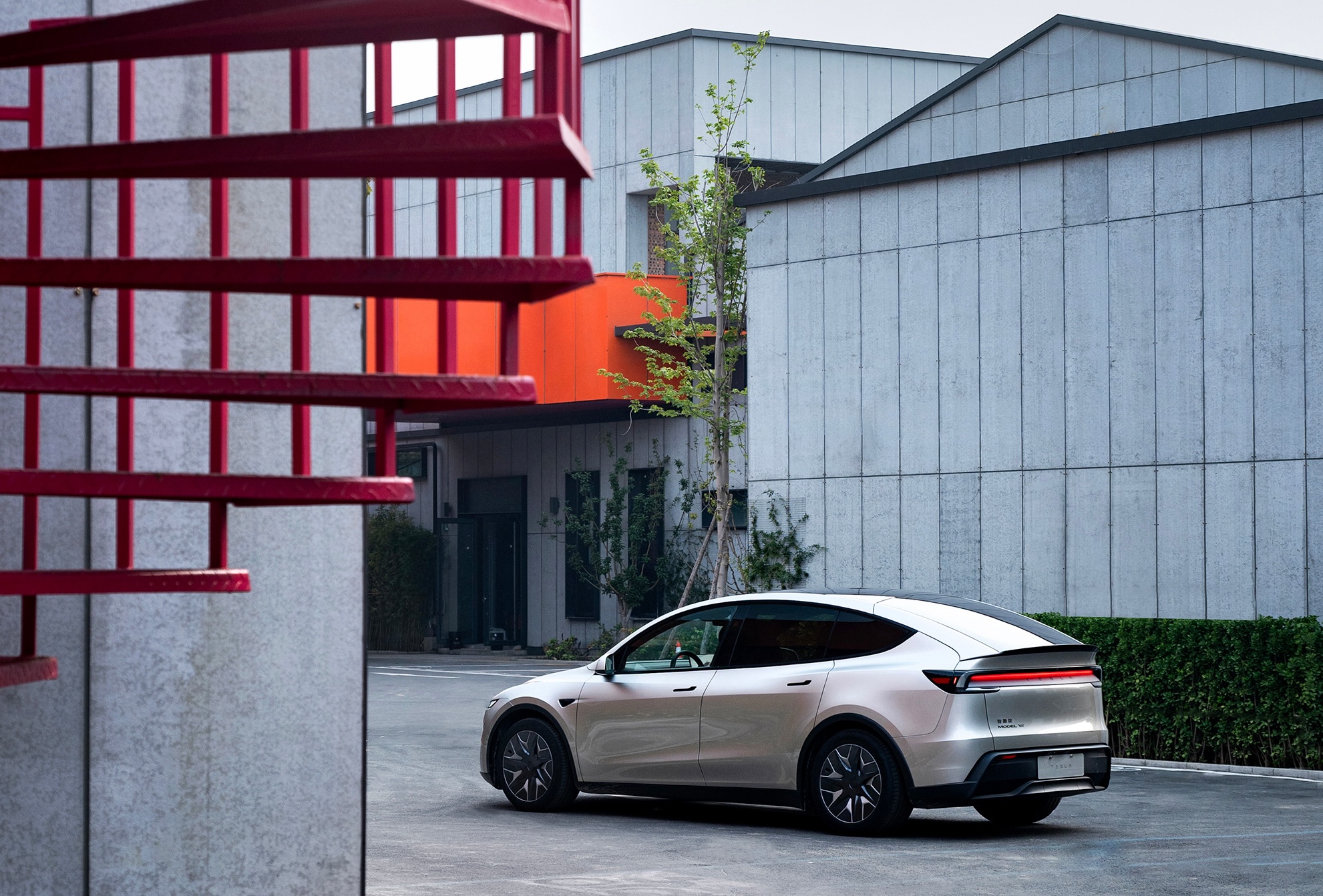
The Tesla Model Y L seems to be in high demand in China, with estimated delivery dates for new orders now extending all the way into February 2026.
This suggests that the Model Y L has been officially sold out from the rest of 2025 to January 2026.
Model Y L estimated delivery dates
The Model Y L’s updated delivery dates mark an extension from the vehicle’s previous 4-8 week estimated wait time. A detailed chart shared by Tesla data tracker @Tslachan on X shows the progressions of the Model Y L’s estimated delivery dates since its launch earlier this year.
Following its launch in September, the vehicle was given an initial October 2025 estimated delivery date. The wait times for the vehicle were continually updated over the years, until the middle of November, when the Model Y L had an estimated delivery date of 4-8 weeks. This remained until now, when Tesla China simply listed February 2026 as the estimated delivery date for new Model Y L orders.
Model Y demand in China
Tesla Model Y demand in China seems to be very healthy, even beyond the Model Y L. New delivery dates show the company has already sold out its allocation of the all-electric crossover for 2025. The Model Y has been the most popular vehicle in the world in both of the last two years, outpacing incredibly popular vehicles like the Toyota RAV4. In China, the EV market is substantially more saturated, with more competitors than in any other market.
Tesla has been particularly kind to the Chinese market, as it has launched trim levels for the Model Y in the country that are not available anywhere else, such as the Model Y L. Demand has been strong for the Model Y in China, with the vehicle ranking among the country’s top 5 New Energy Vehicles. Interestingly enough, vehicles that beat the Model Y in volume like the BYD Seagull are notably more affordable. Compared to vehicles that are comparably priced, the Model Y remains a strong seller in China.
Elon Musk
NVIDIA CEO Jensen Huang commends Tesla’s Elon Musk for early belief
“And when I announced DGX-1, nobody in the world wanted it. I had no purchase orders, not one. Nobody wanted to buy it. Nobody wanted to be part of it, except for Elon.”
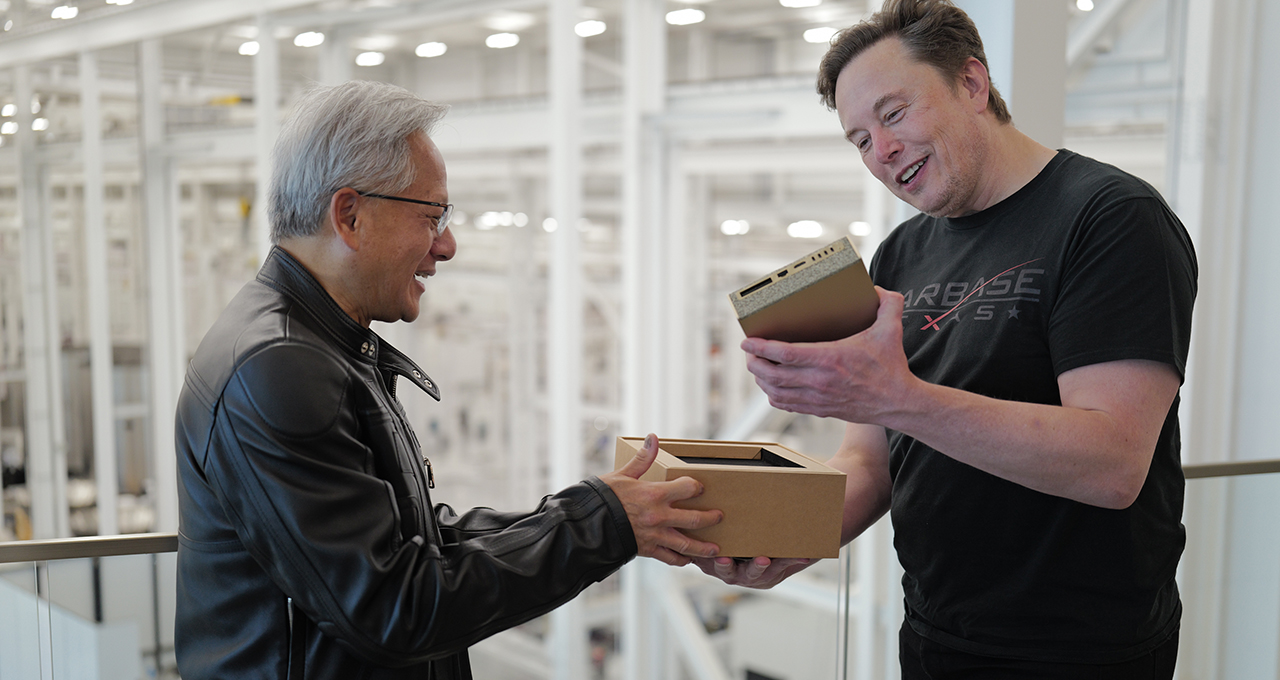
NVIDIA CEO Jensen Huang appeared on the Joe Rogan Experience podcast on Wednesday and commended Tesla CEO Elon Musk for his early belief in what is now the most valuable company in the world.
Huang and Musk are widely regarded as two of the greatest tech entrepreneurs of the modern era, with the two working in conjunction as NVIDIA’s chips are present in Tesla vehicles, particularly utilized for self-driving technology and data collection.
Nvidia CEO Jensen Huang regrets not investing more in Elon Musk’s xAI
Both CEOs defied all odds and created companies from virtually nothing. Musk joined Tesla in the early 2000s before the company had even established any plans to build a vehicle. Jensen created NVIDIA in the booth of a Denny’s restaurant, which has been memorialized with a plaque.
On the JRE episode, Rogan asked about Jensen’s relationship with Elon, to which the NVIDIA CEO said that Musk was there when nobody else was:
“I was lucky because I had known Elon Musk, and I helped him build the first computer for Model 3, the Model S, and when he wanted to start working on an autonomous vehicle. I helped him build the computer that went into the Model S AV system, his full self-driving system. We were basically the FSD computer version 1, and so we were already working together.
And when I announced DGX-1, nobody in the world wanted it. I had no purchase orders, not one. Nobody wanted to buy it. Nobody wanted to be part of it, except for Elon.
He goes ‘You know what, I have a company that could really use this.’ I said, Wow, my first customer. And he goes, it’s an AI company, and it’s a nonprofit and and we could really use one of these supercomputers. I boxed one up, I drove it up to San Francisco, and I delivered it to the Elon in 2016.”
The first DGX-1 AI supercomputer was delivered personally to Musk when he was with OpenAI, which provided crucial early compute power for AI research, accelerating breakthroughs in machine learning that underpin modern tools like ChatGPT.
Tesla’s Nvidia purchases could reach $4 billion this year: Musk
The long-term alliance between NVIDIA and Tesla has driven over $2 trillion in the company’s market value since 2016.
